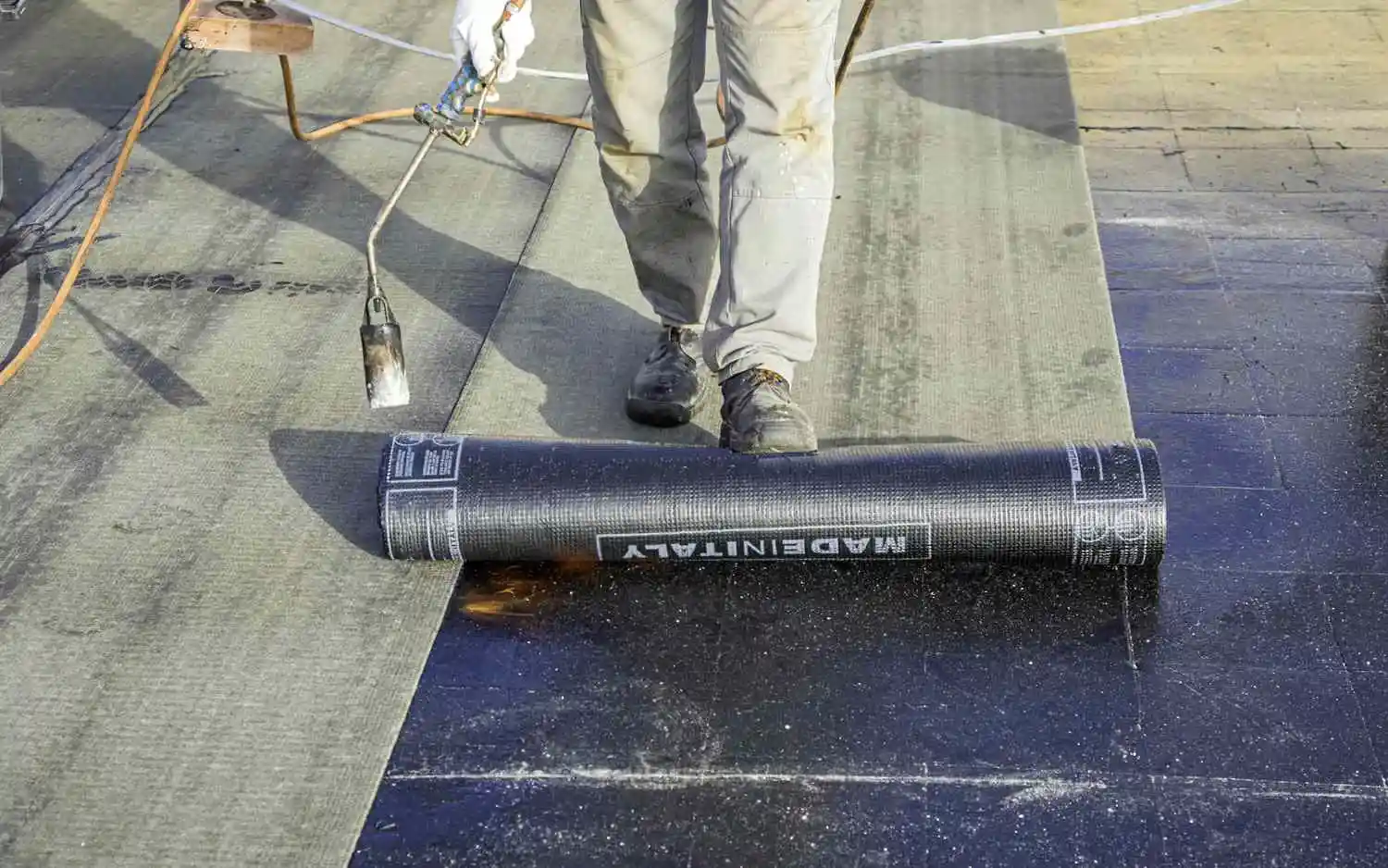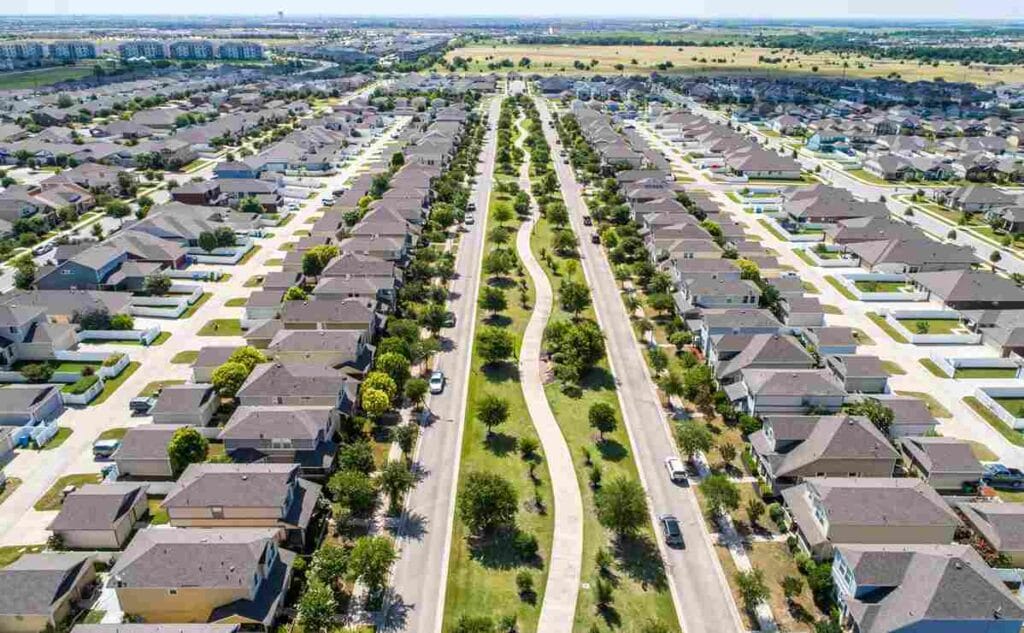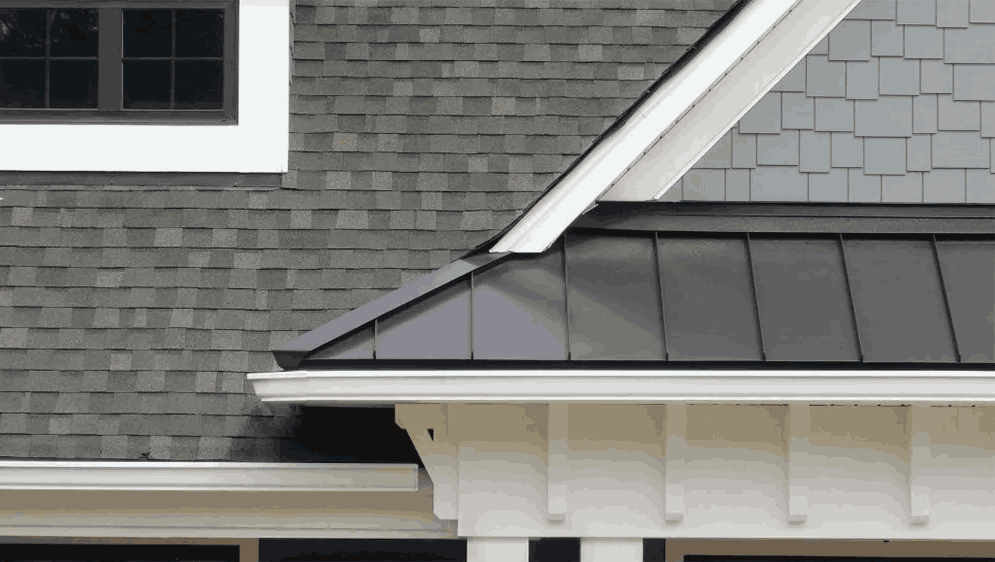What exactly is rolled roofing, and is it the right option for your home or project?
In this article, we’ll explain what rolled roofing is, how it works, its pros and cons, where it’s best used, and how much it typically costs.
Whether you’re planning a small shed project or considering a cost-effective roof for a structure on your property, this guide will give you the insight you need to make an informed decision.
Table of Contents
ToggleWhat Is Rolled Roofing?
Rolled roofing, also known as MSR (mineral-surfaced roll roofing), is a type of roofing material that comes in large rolls rather than individual shingles. It’s made from the same materials as asphalt shingles—fiberglass or organic felt with an asphalt coating—but is manufactured in long sheets, typically 36 inches wide and 33 to 100 feet long.
This roofing material is relatively easy to install and is applied in overlapping layers secured with nails or roofing cement. It’s most commonly used on low-slope roofs, sheds, garages, workshops, and other outbuildings.
Key Features of Rolled Roofing
-
Material: Asphalt-saturated base with a mineral surface
-
Roll size: Typically 100 square feet (1 roofing square)
-
Installation: Fast and straightforward, can often be DIYed
-
Best use: Low-slope roofs (not flat) and secondary structures
-
Lifespan: 5 to 10 years
Pros of Rolled Roofing
✅ 1. Budget-Friendly
Rolled roofing is one of the most cost-effective roofing materials available. It costs significantly less than asphalt shingles or metal roofing, making it a top choice for budget-conscious homeowners.
✅ 2. Easy and Fast Installation
This roofing material is known for its quick installation. One roll can cover large sections of a roof, reducing labor time. Many DIYers choose rolled roofing for this reason.
✅ 3. Lightweight
Because it’s thinner and lighter than traditional roofing materials, rolled roofing puts less stress on your roof’s structure, making it ideal for older buildings or sheds.
✅ 4. Minimal Tools Required
Installing rolled roofing doesn’t require specialty tools. A utility knife, roofing nails, a hammer, and roofing cement are often all that’s needed.
Cons of Rolled Roofing
❌ 1. Shorter Lifespan
Compared to other roofing materials, rolled roofing is susceptible to damage on harsh weather, which cause less durability, much shorter life expectancy—usually around 5 to 10 years with proper weather conditions and maintenance.
❌ 2. Limited Aesthetic Appeal
Rolled roofing is primarily limited in colors, typically black or gray, and lacks the dimensional look of shingles. best suited for commercial buildings rather than small residential buildings or homes.
❌ 3. Vulnerable to Damage
Susceptibility to damage, it’s more prone to cracking, tearing, and leaking, especially in extreme temperatures or under heavy foot traffic, affecting durability and longevity. Take this on consideration to enhance durability.
❌ 4. Not for Steep Roofs
Rolled roofing isn’t suitable for roofs with a steep pitch. It performs best on low-slope (but not flat) roofs, typically with a pitch of less than 3:12.
Where Is Rolled Roofing Best Used?
Rolled roofing is ideal for:
-
Sheds
-
Detached garages
-
Barns
-
Workshops
-
Porches
-
Low-slope residential roofs (with caution)
It’s not recommended for high-end residential properties or steep-pitched roofs due to its limited lifespan and aesthetic drawbacks.
Types of Rolled Roofing
There are a few different types of rolled roofing materials available:
1. Saturated Felt Roofing
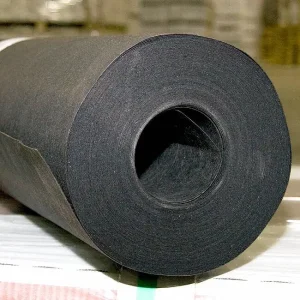
Typically used as underlayment, not as a final surface. It’s made with organic felt saturated in asphalt.
2. MSR (Mineral-Surfaced Roll)
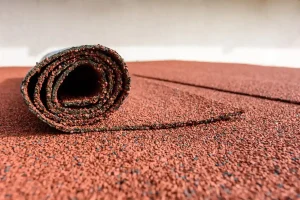
The most common type, used as a standalone roofing layer. It comes in 36-inch-wide rolls and is surfaced with mineral granules.
3. Rubber Rolled Roofing
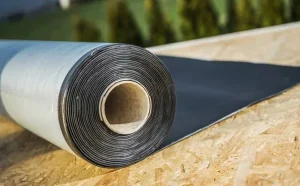
Made from EPDM rubber, this is more durable and flexible, often used on commercial flat roofs.
How Much Does Rolled Roofing Cost?
On average, rolled roofing costs between $1.50 to $2.50 per square foot installed, which includes both material and labor. DIY installation can reduce this to less than $1 per square foot, depending on the type of product you choose.
| Roofing Type | Cost per Sq. Ft. | Lifespan |
|---|---|---|
| Rolled Roofing (MSR) | $1.50 – $2.50 | 5–10 years |
| Asphalt Shingles | $3.50 – $5.50 | 20–30 years |
| Metal Roofing | $6.00 – $12.00 | 40–70 years |
How to Install Rolled Roofing (Basic Steps)
Note: Always follow manufacturer instructions and observe safety guidelines.
-
Prepare the Roof Surface
-
Clean off debris and repair damaged decking.
-
Apply roofing primer if necessary.
-
-
Measure and Cut
-
Unroll the coat material and cut to length.
-
Allow a 2–4 inch overlap for seams.
-
-
Apply Roofing Cement
-
Spread roofing cement along the edges and seams.
-
-
Nail Down the Roll
-
Use roofing nails every 6 to 10 inches along the edges.
-
Seal over nails with more roofing cement.
-
-
Repeat and Overlap
-
Continue with the next roll, overlapping the previous section.
-
Maintenance Tips for Rolled Roofing
-
Inspect regularly for cracks, blisters, and lifted edges.
-
Re-seal seams and nail heads every few years.
-
Clean debris that can trap moisture or puncture the surface.
-
Avoid walking on rolled roofing unless necessary—it can be fragile.
Final Thoughts: Is Rolled Roofing Right for You?
If you need a low-cost, quick roofing solution for a secondary structure or low-slope roof, rolled roofing can be a practical choice. It’s not the most attractive or long-lasting material, but it gets the job done for certain applications.
However, for residential homes where appearance, longevity, and performance are important, you’re better off investing in asphalt shingles or metal roofing.

